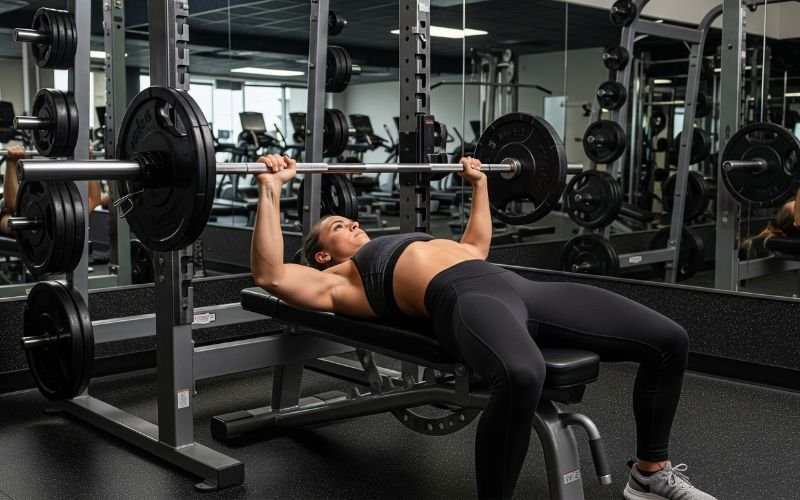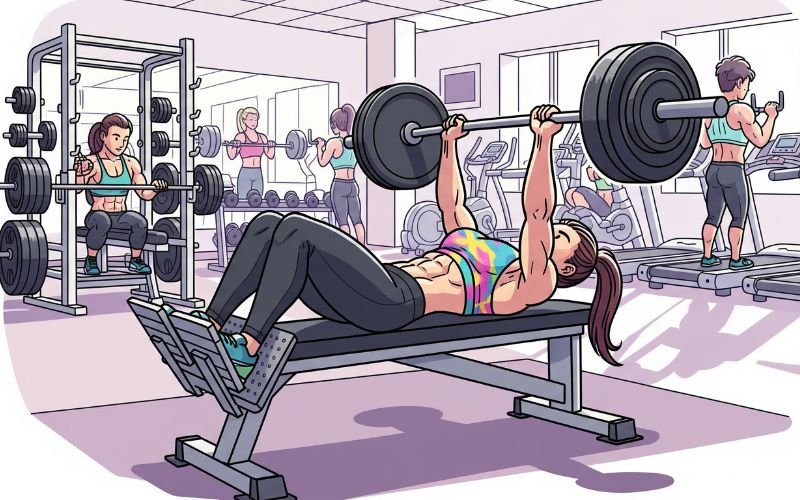
When I first stepped into the gym years ago, I remember feeling both excited and overwhelmed. One thing was clear from day one: everyone wanted a bigger chest. But while most people piled on the bench press, I noticed something missing — their chest didn’t look complete. The upper part looked fine, but the lower chest? Flat. That’s when I realized that lower chest workouts were the secret ingredient to building a truly defined and balanced chest.
In this guide, I’ll share everything you need to know about lower chest workouts — from why they matter, the best exercises you can do, my own personal training experience, and how you can structure your workout plan. Whether you’re a beginner or someone who’s been training for years, this blog will give you an expert yet easy-to-follow roadmap.
Table of Contents
Why Focus on the Lower Chest Workouts?
Think of your chest like a house. The upper chest is the roof, the mid-chest is the walls, but the lower chest? That’s the foundation. Without a solid foundation, your chest looks incomplete.
The pectoralis major, your main chest muscle, has two heads:
- Clavicular head (upper chest)
- Sternal head (NIH – Anatomy of the Pectoralis Major).
The lower chest is part of the sternal head. Training it specifically creates that chiseled, athletic look — the line that separates the chest from the abs, the fullness under the pecs that makes your torso look powerful.
When I neglected my lower chest in the early days, my bench press improved, but visually, my chest looked “top-heavy.” Once I incorporated lower chest exercises, the change was noticeable within weeks — more roundness, depth, and balance.
The Golden Rule: Angle Is Everything
Before we jump into the exercises, here’s the golden rule I learned through trial and error:
👉 If you want to hit the lower chest, work at a decline angle or use movements that push downward.
This is why flat bench alone won’t cut it. You need decline presses, dips, and smart variations to bring out that lower chest definition.
Best Lower Chest Workouts (Tried and Tested)

Here’s a list of the best lower chest exercises that I personally use and recommend to my clients.
1. Decline Barbell Bench Press
If the flat bench is king, the decline bench press is its underrated cousin. By lowering the bench to a decline position (usually 15–30 degrees), the bar path shifts downward, putting more stress on your lower chest.
How to do it:
- Lie on a decline bench and grip the bar slightly wider than shoulder-width.
- Lower the bar slowly to your lower chest (not mid-chest like flat bench).
- Press back up explosively.
👉 Pro Tip: Don’t overload the bar right away. Focus on control and feeling the contraction.
2. Chest Dips (Bodyweight or Weighted)
If I could only pick one lower chest workout, it would be dips. They build raw strength and definition. When you lean forward slightly, dips torch your lower chest and triceps at the same time.
How to do it:
- Grab the dip bars and lift yourself up.
- Lean forward slightly and lower your body until elbows are at 90 degrees.
- Push back up, squeezing your chest.
👉 Pro Tip: Add a dip belt with weights once bodyweight feels too easy.
3. Decline Dumbbell Press
While barbells are great for strength, dumbbells give you freedom of movement and a deeper stretch. This helps recruit more muscle fibers in the lower chest.
How to do it:
- Set the bench to a decline angle.
- Hold dumbbells over your chest with palms facing forward.
- Lower them slowly until elbows are parallel to the floor.
- Press back up while squeezing your pecs.
👉 Pro Tip: Rotate your wrists slightly inward at the top for maximum chest squeeze. Dumbbells aren’t just for chest workouts. You can also shape your lower body with these Glutes Dumbbell Exercises.
4. Decline Push-Ups
Not everyone has access to fancy gym equipment. That’s why I love decline push-ups — they’re free, effective, and can be done anywhere. If you prefer training with zero equipment, don’t miss my detailed guide on a Home Workout Without Dumbbells.
How to do it:
- Place your feet on a bench or elevated surface.
- Get into push-up position with hands shoulder-width apart.
- Lower your chest to the ground, keeping your body straight.
- Push back up while squeezing the chest.
👉 Pro Tip: Slow down your reps and add a backpack with weight for more intensity.
5. Cable Crossover (Low to High)
Cables are amazing for constant tension. By pulling upward and inward, you hit the lower chest fibers directly.
How to do it:
- Set the cable pulleys at the lowest setting.
- Grab the handles and step forward slightly.
- With elbows slightly bent, bring the handles upward and inward in a sweeping motion.
- Squeeze your chest at the top.
👉 Pro Tip: Don’t go too heavy. Control is more important than ego here.
6. Machine Decline Press
Not every gym has a decline bench, but most gyms have a machine version. Machines are great for beginners or for adding extra volume after free weights.
How to do it:
- Adjust the seat so the handles align with your lower chest.
- Push forward until arms are fully extended.
- Slowly return with control.
Sample Lower Chest Workout Routine
Here’s a proven workout plan you can follow twice a week:
- Decline Barbell Press – 4 sets x 8–10 reps
- Chest Dips – 4 sets x 8–12 reps
- Decline Dumbbell Press – 3 sets x 10–12 reps
- Cable Crossover (Low to High) – 3 sets x 12–15 reps
- Decline Push-Ups (Finisher) – 2 sets to failure
👉 Rest: 60–90 seconds between sets.
👉 Frequency: 1–2 times per week (don’t overtrain).
This routine blends strength, hypertrophy, and endurance to maximize lower chest growth.
My Personal Experience with Lower Chest Training
When I first added decline presses and dips to my program, I struggled. My ego wanted me to lift heavy, but my form suffered. So I stripped the weight back and focused on the mind-muscle connection. Within 8 weeks, I saw a visible line separating my pecs from my abs.
Today, I still keep dips and decline dumbbell press in my routine year-round. They’re not just for aesthetics — a strong lower chest also improves pushing strength, posture, and even athletic performance.
Common Mistakes to Avoid
Over years of training and coaching, I’ve noticed people often make the same mistakes with lower chest workouts:
- Only doing flat bench – Flat bench is great, but it won’t carve out your lower chest.
- Going too heavy on decline presses – Heavy weight with poor form = shoulder stress.
- Neglecting dips and push-ups – Bodyweight basics are just as powerful.
- Not focusing on contraction – Lower chest growth comes from controlled reps, not rushing.
Nutrition & Recovery for Chest Growth
Workouts are only half the battle. To actually grow your lower chest, you need:
- Protein-rich diet – Aim for 1.6–2g protein per kg bodyweight.
- Caloric surplus (for muscle gain) or deficit (for definition).
- Adequate rest – Muscles grow when you recover, not during the workout.
- Supplements (optional but effective):
- Whey protein for muscle recovery
- Creatine for strength gains
- Pre-workout for energy and focus
- Whey protein for muscle recovery
👉 A stronger chest also improves posture and reduces stress on your back. If back pain is an issue, especially during pregnancy, you might find my Pregnancy Back Pain Exercises very helpful.
Final Thoughts
Building a strong, defined chest isn’t just about the bench press. If you truly want that aesthetic, powerful look, you need to focus on your lower chest workouts.
Start simple: add dips, decline presses, and cable work into your program. Stay consistent, eat right, and don’t rush the process. I can tell you from personal experience — once your lower chest fills out, your entire physique transforms.
So next time you walk into the gym, don’t just chase numbers on the flat bench. Build the foundation. Build your lower chest.




